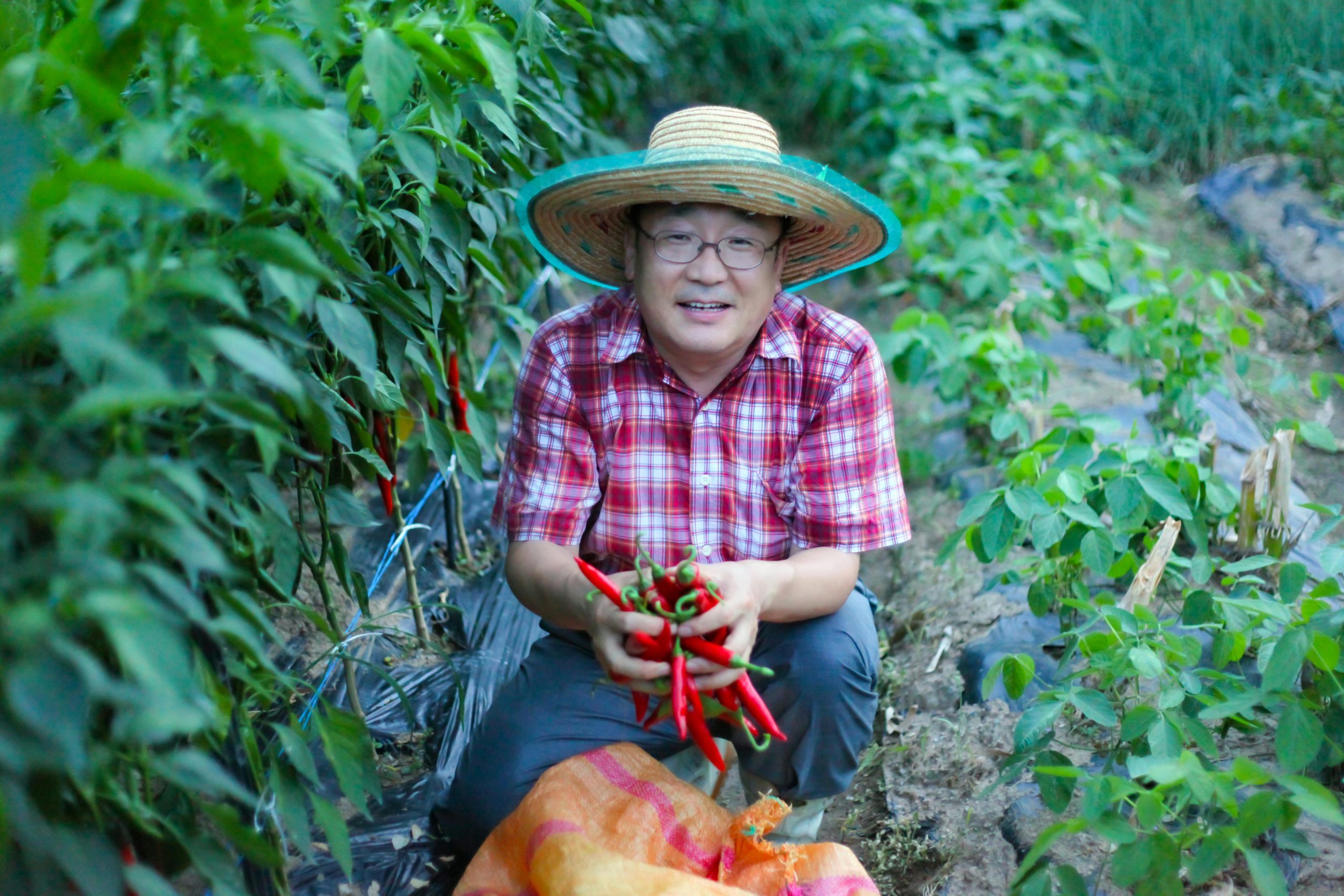How to Plan a Sustainable and Organic Vegetable Patch for Year-Round Harvesting?

The perfect organic garden is not just about green leaves. It’s an eco-system where plants, insects and micro-organisms live in harmony. You want to grow a variety of plants that are healthy, vibrant, and yield an abundance of food. In this article, we will guide you through the process of building and maintaining your sustainable and organic vegetable garden, taking you through every season of the year.
Time to Get Planning
Before you start digging, you need to put some thought into what you’re going to grow. The best gardens are those that have been planned well. Start by considering what vegetables you and your family enjoy eating. Research those plants to understand their growing conditions and physical space needs.
A lire également : How Can You Optimize Kitchen Storage with Clever Cabinet Organizers?
Ensure you choose plant suitable for your climate. Some plants thrive in cooler climates while others need a lot of sunlight. It’s crucial to know when each plant should be planted and harvested. This way, you can stagger planting to ensure a year-round supply of fresh, organic food from your garden.
Consider plants that complement each other. Companion planting is a beneficial organic gardening technique. Some plant combinations can enhance growth, while others can prevent pest issues.
Sujet a lire : What’s the Best Method for Creating a Modular Home Office for Freelancers?
A well-planned garden considers crop rotation. This is the practice of growing different crops in the same area across different seasons. It prevents soil depletion, as different plants have varying nutrient needs.
Preparing Your Soil
The soil is arguably the most critical aspect of your garden. Healthy soil equates to healthy plants. Before planting anything, it’s essential to prepare your soil well.
Start by assessing your soil. You can purchase a soil testing kit, which will indicate the soil’s pH balance and nutrient levels. Optimal garden soil should be rich in organic matter and have a near-neutral pH.
To improve soil quality, incorporate organic compost. Compost adds nutrients and improves soil structure, encouraging healthy root development. To make your compost, collect green waste such as grass clippings and kitchen scraps. Layer these with brown material like dead leaves or cardboard. Turn the pile regularly to speed up the decomposition process.
Mulch is another valuable addition to your garden. It suppresses weeds, retains moisture, and can add nutrients to the soil.
Planting and Growing
With your plan in hand and soil prepared, it’s time to get planting. There are generally two ways to start plants: from seeds or from seedlings. Starting from seeds is more cost-effective and offers a wider variety of plants to grow. However, growing from seedlings can give you a jump start on the growing season.
When planting, pay attention to the spacing recommendations for each plant. Overcrowding can lead to poor air circulation and competition for nutrients, which can hinder the growth of your plants.
Watering is a crucial aspect of plant care. Most vegetables prefer deep, infrequent watering as opposed to shallow, frequent watering. This encourages the plant roots to grow deeper into the soil, making them more resilient to drought.
Seasonal Care and Harvest
Your responsibilities in the garden will shift with the seasons. In spring, your focus will be on planting and ensuring your young plants are well protected from late frosts. Come summer, you’ll need to keep an eye on watering, as the heat can quickly dry out your soil.
Autumn is primarily a time of harvest. This is when you’ll reap the rewards of your gardening efforts. However, don’t forget to start planting your cool-season crops for winter.
Winter is a time for rest in the garden, but not for the gardener. Take this time to plan for the upcoming year. Consider what worked well in your garden and what didn’t. Use this time to replenish your soil with organic matter and cover crops to protect it from erosion.
Maintaining an Organic Garden
Remember that in an organic garden, synthetic fertilizers and pesticides are off-limits. Instead, focus on building healthy soil and promoting a balanced eco-system.
To manage pests organically, you can introduce beneficial insects into your garden. Many insects, like ladybugs and lacewings, are natural predators of common garden pests. Regularly inspect your plants for signs of disease or infestation. Early detection makes organic control measures more effective.
Weeding is another ongoing task. Hand-pull weeds or use a hoe to keep them at bay. If weeds become too overwhelming, consider using a ground cover or mulch to suppress their growth.
In the end, the keys to a productive organic garden are thorough planning, attention to soil health, good plant care, and a commitment to natural, sustainable practices. The rewards of a successful organic garden include not only an abundance of fresh food but also the satisfaction of knowing you’re contributing to a healthier planet.
Seasonal Planting for Year-Round Yield
The success of an organic vegetable garden depends significantly on the growing season. Observing the cycle of seasons and understanding what will grow and when, ensures a year-round supply of fresh produce. A well-thought-out garden plan rooted in seasonal planting is fundamental to organic gardening.
Start the year in early spring by planting cold-tolerant vegetables like peas, spinach, and lettuce. Utilize cold frames to protect young seedlings from late season frosts. As the weather warms up, you can begin planting crops that require full sun and warmer conditions, such as tomatoes, peppers, and cucumbers.
Transition into the fall with vegetables that thrive in cooler temperatures. Broccoli, Brussels sprouts, and kale are all excellent choices. These plants not only tolerate the cold but often become sweeter after a light frost. During winter, you can continue to harvest these robust vegetables. You could also utilize your cold frames or a raised bed covered with a hoop house to grow cold-hardy crops like spinach and mache.
Make sure to incorporate crop rotation into your garden planning. This practice helps prevent the build-up of pests and diseases that prefer specific crops. Moreover, different plants contribute and take diverse nutrients from the soil, helping maintain its overall health.
Also, consider growing a variety pack of vegetables. This will not only provide a colorful and varied harvest but also help in maintaining the balance of the garden’s ecosystem.
Conclusion: The Rewards of a Sustainable Garden
Embarking on the journey of growing food organically might seem challenging, but the rewards are well worth it. With careful planning and attention to detail, you can cultivate a vegetable garden that yields fresh and nutritious produce all year round.
Remember, it’s not just about the end product. The process itself – from planning your garden, nurturing the soil with organic matter, planting in harmony with the seasons, to finally harvesting your produce – is a fulfilling experience.
Moreover, organic gardening is more than just a hobby. It’s a commitment to sustainable living and environmental responsibility. By opting to grow your vegetables organically, you’re not only ensuring a healthier diet for yourself and your family but also contributing to a greener, sustainable planet.
Consider the unit price of each vegetable when planning your garden. Certain vegetables can save you a substantial amount of money in the long run, making your garden doubly beneficial: a source of food and savings.
From spring to fall, and back again, your garden is an unfolding story of life, growth, and harvest. Every season brings its own joys and challenges, and through it all, you’re not just growing vegetables, you’re growing as a gardener and steward of the earth. Your organic vegetable garden is a testament to your commitment to sustainability and a celebration of nature’s abundance.
